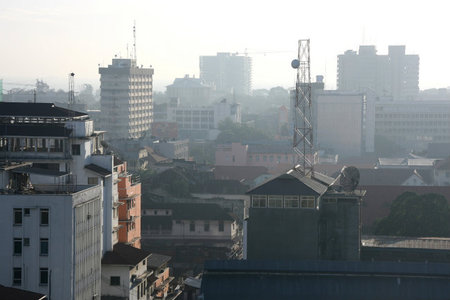From the shortlist of Sustainable Development Goals (SDGs) the United Nations is considering, one goal calls for "inclusive, safe, resilient and sustainable" cities and human settlements. The inclusion of an urban-focused goal highlights a growing consensus that cities must think deliberately about their long-term development strategies in the context of rapid global urbanization. The cases of Cape Town, São Paulo, Ho Chi Minh City, and Cairo shed light on some of the opportunities and challenges of government projects in the name of sustainable development.
The city of Cape Town has been lauded as a model of sustainability. The Ethisphere Institute identified it as one of the ten cities that are most likely to become a global sustainability center by 2020. Much of its recognition centers on the city's Sustainable Development Programme, which aims to have ten percent of homes using solar power and ten percent of the city's energy consumption from renewable sources goals by 2020. However, in the same report in which the Ethisphere Institute identified Cape Town as a 'top ten' city, the Institute added: "While much of the city is developing nicely, a good chunk of it remains in squalor conditions." If 'a good chunk of squalor' seems little cause for derailing a 'top in the world' status, what then is 'sustainability'? Particularly across the Global South, it is essential to take into account existing spatial inequalities and avoid situations in which the 'green' discourse justifies further investment in the wealthiest areas at the expense of the poorest.
 São Paulo adopted a new Master Plan in August 2014 after a long process of participatory revision. The plan prioritizes the issue of access to urban land, a severe challenge across the Global South, and calls for all real estate development to be accompanied by the development of social housing. While detailing improvements to the public transportation system, the strategy also recognizes the importance of actively encouraging 'lightweight' transport through the design of safe and useable paths for pedestrians and cyclists. One particularly innovative proposal is to incentivize enterprises to open up green, public spaces on the ground floor of their private building properties. The question remains, however, as to whether the Master Plans' ambition and innovation will be echoed and implemented by the city's soon-to-be-developed local plans.
São Paulo adopted a new Master Plan in August 2014 after a long process of participatory revision. The plan prioritizes the issue of access to urban land, a severe challenge across the Global South, and calls for all real estate development to be accompanied by the development of social housing. While detailing improvements to the public transportation system, the strategy also recognizes the importance of actively encouraging 'lightweight' transport through the design of safe and useable paths for pedestrians and cyclists. One particularly innovative proposal is to incentivize enterprises to open up green, public spaces on the ground floor of their private building properties. The question remains, however, as to whether the Master Plans' ambition and innovation will be echoed and implemented by the city's soon-to-be-developed local plans.
With a population of 8 million inhabitants, Ho Chi Minh City currently accommodates 16 times more residents than the previous city plan, developed in 1862, planned for. In 2013, the city founded the Sustainable Development Committee to oversee an ambitious city expansion project, with the long-term goal of comfortably accommodating 10 million inhabitants by 2025. This mega-city will consist of one central city and four satellite cities, each with its own specialized industrial zone, university village, social service facilities, parks, and housing zones. Development is underway on a new metro system that will become the backbone of the future municipality, attracting more inhabitants to the satellite cities. The project is a massive and expensive undertaking, but has the potential to drastically reduce the strains of overpopulation in the city center.
Cairo faces similar challenges of overcrowded neighborhoods and overburdened transportation systems. Starting in the 1990's, the government therefore built satellite cities around the capital to absorb the population growth. These cities were designed to be self-contained, with low-cost public housing and opportunities for employment and education for those who move there. Residents, many of whom are part of the burgeoning youth population, often experience a more quiet and relaxed pace of life compared to what is possible in downtown Cairo. The downsides, however, include higher costs of living and limited effective low-cost public transportation. Still, the experiment will continue to expand in new directions; just this year the Egyptian government proposed building a new administrative capital for the country outside of Cairo.
With a city-centered SDG, the successes and challenges of past and current urban developing projects will play an increasingly important role in shaping future plans. For more discussion of city policies and projects related to the urban SDG, check out URB.im to read perspectives from 16 cities across the Global South.
Photo: Alf Storm